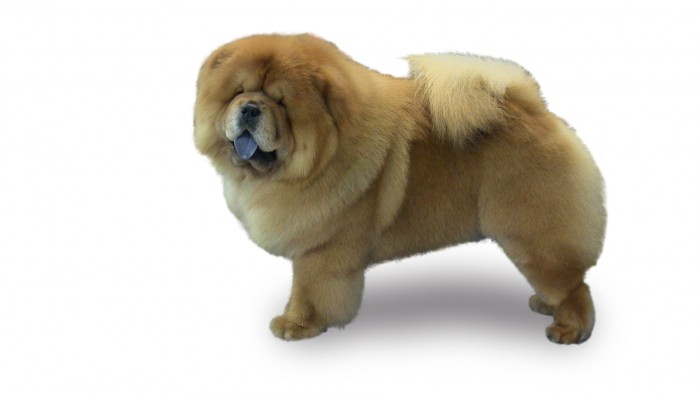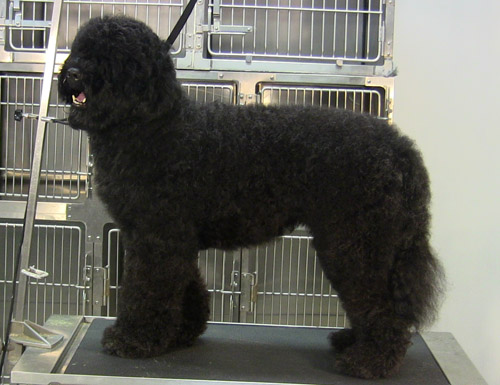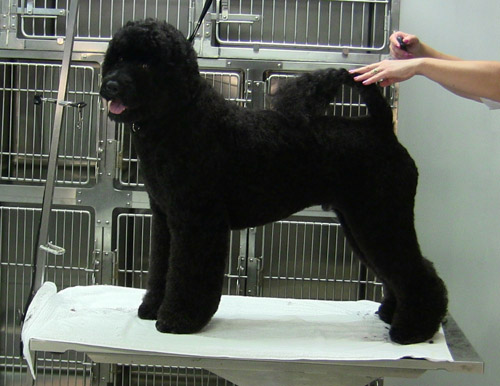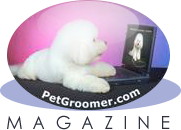by Christina Pawlosky
 I’m often asked about the most difficult types of dogs to groom. I don’t like to think of a particular breed of dog being harder to groom because every dog and situation is different. There are breeds that do take more time depending on size of the dog, coat type and condition but you should be charging for your time to make up for the job. Two reasons the groom may be a little harder than usual are: 1) a dog is not scheduled to be groomed often enough to maintain the coat in good condition and/or 2) the dog has poor physical condition, temperament and training while at the grooming salon. Here are a few best practices to help combat these issues:
I’m often asked about the most difficult types of dogs to groom. I don’t like to think of a particular breed of dog being harder to groom because every dog and situation is different. There are breeds that do take more time depending on size of the dog, coat type and condition but you should be charging for your time to make up for the job. Two reasons the groom may be a little harder than usual are: 1) a dog is not scheduled to be groomed often enough to maintain the coat in good condition and/or 2) the dog has poor physical condition, temperament and training while at the grooming salon. Here are a few best practices to help combat these issues:
Educate the Owners – Many dog owners ask for longer trims than they can care for at home, which makes the next professional groom that much more difficult. I find this problem is easily solved by providing the pet owner with good information and making them a part of the grooming process. I review the correct tools needed to maintain the dogs coat and I show the owner how to restrain the dog and use them. If the owner does not want to be involved, I set up groom or bath appointments frequently enough to maintain a mat-free coat.
Teach Regularity – Dogs that are not groomed often enough are typically in poor condition; either heavily matted, overgrown or extra dirty. A dog on an irregular schedule may not be used to the grooming experience – making the job more difficult. I find dogs that are groomed regularly within two to six weeks enjoy the experience a lot more then dogs that come in every three months or more. When addressing long double-coated breeds, sometimes just getting the dogs on a regular rotation of four to six weeks cuts down on time and stress for you and the dog.

Equip Yourself – Having the right equipment on hand to deal with ill temperaments, very large breeds and very old dogs is key. Using the recommended Oster® products, good handling techniques and scheduling regular appointments will make even the hardest groom easier.
To Hold the Dog in Place. I am a big fan of the Groomer’s Helper. It holds the dogs safely in place so they do not learn to make mistakes. In many cases it is enough restraint for an aggressive dog as well. The system also allows the groomer better control so you can achieve your goal more efficiently – finishing faster making everyone happy. I also find dogs are way more accepting of the Helper than a muzzle or more restrictive restraints. For my older or very overweight dogs I teach them to lay on their side. I groom one side and roll them over to do the next. When they leave they are able to walk out the door with a little spring in their step compared to standing the entire time they are groomed. Finally, it’s important to have sturdy tables and tubs with either hydraulics or ramps.

To save time. A helpful hint for saving time and energy is to limit the amount of hand scissoring on each dog. Use a Heavy Duty Oster® A6 or Volt clipper – both have power and speed to give you a clean finish without having to repeat the process more than two times. Both also take all A5 style blades. I recommend using either with a NEW Oster® Metal Comb Attachment over a Oster® #15 or #30 blade. Oster® now offers a wider variety of Metal Comb Attachments with recent additions of 1 ¼”, 1 ½” and 2”. With these attachments you can leave well over one inch of coat. But remember – comb attachments are finishing tools and the coat should be clean and brushed out. Even with comb attachments, nearly every groom requires a certain amount of scissoring or blending. But if the dog is clean to the skin, conditioned, dried straight and brushed out, the comb attachments will leave very little work to be done. My favorite shear is the Convex 2, 8” straight and the 45 and 26 tooth blenders.
To Deep Clean. When I groom the hairier breeds, I shampoo them to make sure I get to the skin. The Hydrosurge® 5.1 is a great help. Then follow with a deep conditioner like Hydrosurge® Milk Bath Conditioner, which is a nice addition to the process because a deep cleaned and conditioned coat will mat less – especially with longer coats. I also like to recommend a finishing spray that is very light but helps minimize static, deflect dirt and also prevents matting. For longer coats I find using the following before, during and after the bath saves me a lot of time in drying and clean-up. First, use the Hydrosurge® Shed Control Shampoo along with the Milk Bath Conditioner and finish with the Oster® undercoat rakes, starting with the 18 tooth course working the way down to the 18 medium/fine. Unlike some products on the market, the undercoat rakes are easy on the skin and do a great job of assisting out the dead hair.
Keep Calm, Groom On. Another important thing to mention when talking about difficult dogs is how you handle yourself. You need to stay calm and not get frustrated. Maintain constant control with no exceptions. Small measures like using your grooming loop properly and not being so tight as to make the dog uncomfortable, but tight enough so they are not hanging the head in your way or able to move all over your table make all the difference.
Dogs know when they gain an inch and every time they do, they will work against you to gain another. You also do not need to be sympathetic. When you use a sympathetic voice you are telling the dog it has something to worry about making him or her even more anxious.
Go about your groom with confidence and try not to react when the dog struggles if you know you are not hurting them. Just keep grooming, stay calm, be gentle and they will eventually calm down. Maybe not for that day’s appointment but each one after.
Here is to easy grooms! ■


